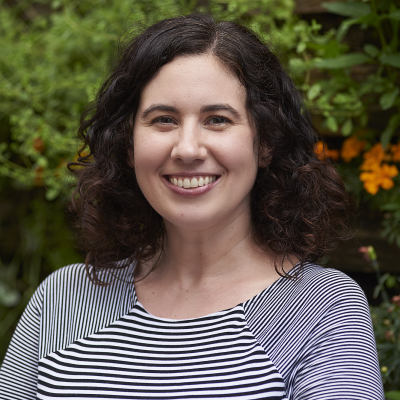
Over the past five years of researching media impact, it’s become clear to me that even those of us who spend our time researching the complexities of impact assessment sometimes rely on unwritten assumptions: that change is linear, and can be easily measured; that social media is an effective organizing tool; that conventional meetings and gatherings invariably lead to greater impact; and that the impact of isolated projects can be viewed outside of the larger systems of which they are a part.
Are these assumptions true? Sometimes, for sure. We’ve recognized and celebrated when particular media projects very clearly lead to change. We’ve seen how social media can lead to influential movements for change. And of course, time and again, we’ve experienced the incredible power of gathering people together in meetings and convenings to share knowledge and generate new solutions.
But the reality of impact can be complicated. We know meetings can be powerful, but are the forms and conventions of traditional meetings always the best way to generate impact? We know social media can be effective for organizing protest movements, but we also know that it can be used to spread misinformation and propaganda. And we know that change isn’t always linear, and that media projects exist within complicated ecosystems that can make impact difficult to pinpoint.
In a couple months, we’ll be releasing a new report synthesizing the last five years of our impact research. As part of that process to develop this much-needed “how to” guide for funders, I’m thinking about these assumptions and how we can draw upon concepts from other fields in order to think about media impact both more broadly and more deeply.
Here’s what I’ll be reading this summer:
The Art of Gathering: How We Meet and Why it Matters
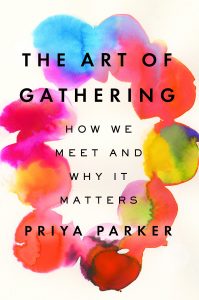 How can convenings have more impact? Instead of relying on traditional conventions and routines for gatherings, focus on finding ways for people to connect meaningfully, advises author Priya Parker. Parker is a longtime facilitator, a founding member of the Sustained Dialogue Campus Network, and a senior expert at Mobius Executive Leadership. Drawing upon her extensive experience, she provides guidance on how to make any gathering more compelling. For example: be sure to close on a powerful note, rather than with logistical information. Since the beginning, peak, and end of a gathering are what people remember over time, make sure that what sticks is more meaningful than where to find the coat check.
How can convenings have more impact? Instead of relying on traditional conventions and routines for gatherings, focus on finding ways for people to connect meaningfully, advises author Priya Parker. Parker is a longtime facilitator, a founding member of the Sustained Dialogue Campus Network, and a senior expert at Mobius Executive Leadership. Drawing upon her extensive experience, she provides guidance on how to make any gathering more compelling. For example: be sure to close on a powerful note, rather than with logistical information. Since the beginning, peak, and end of a gathering are what people remember over time, make sure that what sticks is more meaningful than where to find the coat check.
Twitter and Tear Gas: The Power and Fragility of Networked Protest
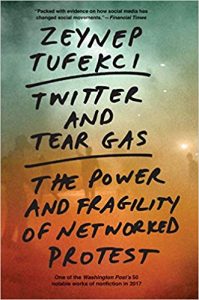 What role does social media play in empowering grassroots organizers and galvanizing protest movements? Do the challenges social media poses ultimately make 21st Century protest movements weaker in the long term? Zeynep Tufekci, associate professor at the University of North Carolina and a contributing opinion writer at the New York Times, takes a look at the impact of networked protest movements around the world and how governments strike back against them by using digital technologies for their own means—such as through disinformation and surveillance.
What role does social media play in empowering grassroots organizers and galvanizing protest movements? Do the challenges social media poses ultimately make 21st Century protest movements weaker in the long term? Zeynep Tufekci, associate professor at the University of North Carolina and a contributing opinion writer at the New York Times, takes a look at the impact of networked protest movements around the world and how governments strike back against them by using digital technologies for their own means—such as through disinformation and surveillance.
Emergent Strategy: Shaping Change, Shaping Worlds
“If we continue to pretend change is a linear process we can control, we will miss out on what’s available to us now,” according to Emergent Strategy author adrienne marie brown. Emergent Strategy, based on concepts drawn from emergence science, includes key principles such as adaptation, creating possibility, resilience, and nonlinear change, and more.
How Change Happens: Why Some Social Movements Succeed While Others Don’t
Is there a “secret sauce” to successful change initiatives? After studying the strategies and approaches of advocacy organizations including the Campaign for Tobacco-Free Kids, Freedom to Marry, and the NRA, author Leslie Crutchfield and her research team identified six key elements of successful social movements, including a strong grassroots element, a focus on state and local efforts, and an emphasis on changing social norms as well as changing policy. Crutchfield, an expert on scaling social innovation, is executive director of the Global Social Enterprise Initiative at Georgetown University’s McDonough School of Business.
The world is made up of systems, and understanding how systems work—particularly the relationships between structure and behavior—is necessarily to change behavior patterns. “As our world continues to change rapidly and become more complex, systems thinking will help us manage, adapt, and see the wide range of choices we have before us,” according to author Donella Meadows. “It is a way of thinking that gives us the freedom to identify root causes of problems and see new opportunities.”
Measure What Matters: How Google, Bono, and the Gates Foundation Rock the World with OKRs
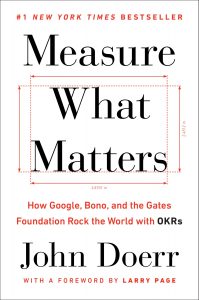 In Measure What Matters, John Doerr, a venture capitalist, engineer and original investor and board member at Google and Amazon, introduces the concept of objectives and key results—better known as OKRs—a system for setting goals that’s widely used in the corporate world. OKRs also have utility in philanthropy, and both the Gates Foundation and Bono’s ONE Foundation are both profiled in the book. Says Bono: “OKRs forced us to think clearly and agree on what we could achieve with the resources we had. They gave us a frame to hang our passion on. . . They sharpened our strategy, our execution, our results. They made us a more effective weapon in the fight against extreme poverty.”
In Measure What Matters, John Doerr, a venture capitalist, engineer and original investor and board member at Google and Amazon, introduces the concept of objectives and key results—better known as OKRs—a system for setting goals that’s widely used in the corporate world. OKRs also have utility in philanthropy, and both the Gates Foundation and Bono’s ONE Foundation are both profiled in the book. Says Bono: “OKRs forced us to think clearly and agree on what we could achieve with the resources we had. They gave us a frame to hang our passion on. . . They sharpened our strategy, our execution, our results. They made us a more effective weapon in the fight against extreme poverty.”
And here are two that I’ve read already, but they’re definitely worth another take:
Story Money Impact: Funding Media for Social Change
One of the few books out there specifically focused on social impact media, Story Money Impact from media strategist Tracey Friesen combines case studies and interviews with successful producers, funding information, key story ingredients, outcome goals and worksheets to help guide makers, funders and activists looking to use media to create lasting change. Find it in our Impact Tools Database.
Lean Impact: How to Innovate Radically for Greater Social Good
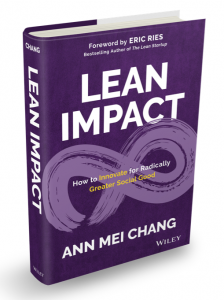 In Lean Impact, Ann Mei Chang, formerly the chief innovation officer at USAID, lays out an impact model adapted from the methodology laid out in the bestselling Lean Startup, a movement among entrepreneurs around the world to get products to market faster, with more innovation. Much like Lean Startup, Lean Impact’s goal is to “find the most efficient path to deliver the greatest social benefit at the largest possible scale.” We’ve written about Lean Impact before—learn more about it here.
In Lean Impact, Ann Mei Chang, formerly the chief innovation officer at USAID, lays out an impact model adapted from the methodology laid out in the bestselling Lean Startup, a movement among entrepreneurs around the world to get products to market faster, with more innovation. Much like Lean Startup, Lean Impact’s goal is to “find the most efficient path to deliver the greatest social benefit at the largest possible scale.” We’ve written about Lean Impact before—learn more about it here.
What impact books are you reading? Let me know!
